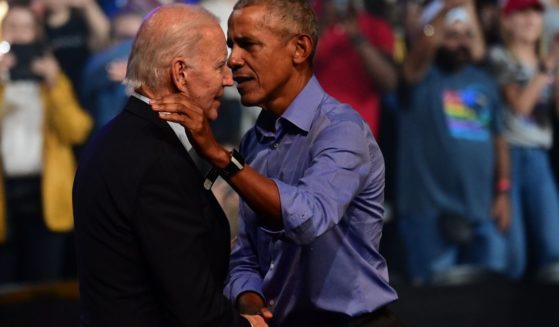Over 500,000 Travelers from China Flooded US at Height of Country's Outbreak
A stunning number of people arrived in the United States from China during the coronavirus outbreak in December, January and February, according to a new report.
ABC News found that the increase in international travel in recent decades could have contributed to how quickly COVID-19 spread across the United States.
Travel data showed that 759,493 people entered the United States from China when the disease was ravaging across that country in December, January and February before Trump closed the United States borders.
That number included 228,000 Americans and 500,000 foreigners.
“This is an astonishing number in a short period of time, illustrating how globalized our world has become,” said Dr. Vinayak Kumar, an internal medicine resident at the Mayo Clinic. “Just as people can hop continents with amazing ease, the infections they carry can too.”
Dr. Simone Wildes, an infectious disease specialist at South Shore Health, added, “we have to be better prepared to deal with the impact [globalization] will have on all our lives in so many ways.”
“It is difficult to estimate the portion of travelers coming from China to the U.S. with COVID-19, but fair to speculate that a large number might have been infected at the time of travel,” Wildes told ABC.
CDC Director Dr. Robert Redfield told NPR health reporter Sam Whitehead on Monday that as many as 25 percent of people infected with the new coronavirus may never show symptoms.
President Donald Trump denied entry to people who traveled from China on Feb. 2, likely saving lives, but many experts are now saying that much of the damage had already been done.
“The United States banned travel to China 12 days after the world heard there was an outbreak of severe pneumonia in Wuhan. … The problem was, it was too late,” said Dr. Todd Ellerin, chief of Infectious Disease at South Shore Health and an ABC News Consultant.
“Even though there had only been 12 confirmed cases in the U.S. on the day President Trump announces the travel ban, the reality was there were many more unconfirmed cases.”
Travel from Italy and Spain wasn’t restricted until March 13 and travel from the U.K. was regulated a few days later. Travel data from December through February showed that 343,402 people arrived in the U.S. from Italy, 418,848 from Spain and 1.9 million from Britain.
Combined with the people traveling from China, only half — about 1.5 million people — entering the United States were Americans returning home. It is still unclear how intensive the screening of Americans who returned home was during that time.
“The high volume of international travel, the lack of screening, the inconsistent hand-washing and cough control … these laid down the perfect conditions for a disease to spread,” Kumar said. “Add that to a virus that is both largely asymptomatic and has a prolonged infectious period, and you have got a perfect storm of factors for a pandemic.”
Questions have emerged about China’s lack of warning when the virus emerged as early as November, but experts say the world needs to work together to fight this pandemic.
“Could China have announced to the world a couple of weeks earlier that there was concern that a SARS-like outbreak was occurring? Possibly,” Ellerin said. “Could an immediate travel ban announced by China have slowed the spread of this virus even further? Likely.
“But, in the end, given the complexities of global travel and the insidious nature of this virus, even an immediate travel ban probably would not have fully contained this contagious pathogen,” she expalined.
As of Saturday morning, there were 278,942 confirmed cases of COVID-19 in the United States and 1.1 million worldwide, according to data from Johns Hopkins.
Truth and Accuracy
We are committed to truth and accuracy in all of our journalism. Read our editorial standards.












